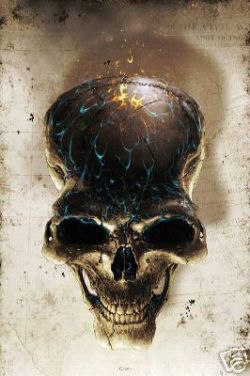|
|
 |
Trail of Tears has the benefit of being firmly grounded with a solid, if unremarkable script. Writer Garth Ennis has been experiencing a bit of a renaissance lately, returning to the top form of his early years, but Trail of Tears may not be the best example of his recent work. It's not bad, but it's not as immediately arresting as The Boys or Chronicles of Wormwood. That may only because it's less graphic and extreme, and is paced at less than a run. Ennis is taking his time to develop this story, moving things along more deliberately than his usual ‘race to the buggery’ style. In the aftermath of a particularly brutal battle, a black freeman takes a wounded Confederate soldier into care. The soldier soon learns the meaning of tolerance, but comes across an idol on the man's land that brings him visions of demons, fire, and various other images that seem to have been taken directly from Humberto Ramos' nightmares. Free of the profanity and cutting dialogue that made him famous, Ennis falters a bit with the more staid period setting, but he's still a strong enough writer to make the story interesting.
But what's even more interesting is the painted artwork from Clayton Crain. In the first few pages of the book, it's laid out like old photographs, black and white and with frayed edges. Once the battle is over, the images shift to color, but maintain the unusual framing. While Clayton's images are beautiful, the action seems a little muddled at time, especially at the beginning, and some of the faces are a little static, their expressions frozen and stiff. Still, it's a nice book to look at, and coupled with Ennis' strong if not exceptional writing, it's worth reading. Certainly more so than the film is worth watching.
Rating: 7 on 10
© Copyright 2002-2019 by Toon Doctor Inc. - All rights Reserved. All other texts, images, characters and trademarks are copyright their respective owners. Use of material in this document (including reproduction, modification, distribution, electronic transmission or republication) without prior written permission is strictly prohibited.

